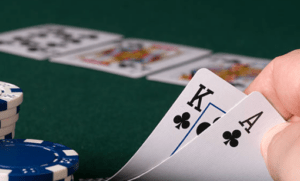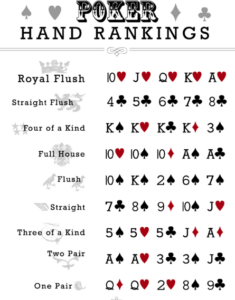As someone who has spent quite some time on the casino floors, I took this opportunity to analyse one of my favourite gambling games: Texas Hold’em No Limit Poker. Amongst the gambling community, No limit holdem is considered as the “Cadillac of Poker” because the mechanic of being able to make bets without any limit creates swings that poker players often have a tough time navigating. “Addiction by Design: Machine Gambling in Las Vegas” Chapter 3, “Programming Chance,” sheds light on the manipulation of probability in gambling machines. From reading the provided excerpt, I delved into how No Limit Poker engages with aspects of probability and how randomness feeds into addiction.
Probability and Chance:
No Limit Poker, much like the gambling machines discussed in “Addiction by Design,” relies on the manipulation of probability to create an enticing and addictive experience. The game mechanics of exposing the flop, turn and river after each turn are designed to evoke a sense of unpredictability and anticipation, leveraging the psychological allure of intermittent reinforcement. Skilled players can calculate and leverage these probabilities to make strategic choices, enhancing their chances of success. However, the randomness of card distribution adds an element of chance that introduces uncertainty and excitement to every hand.
Not only this, players are able to bluff their cards and represent a set of cards that they do not have by betting in a strategic manner. Despite the bad hands the players have been dealt, they can take advantage of the strength of a set of community cards to represent a strong hand. I believe this is a point where more skill than chance can play a role in winning a hand.
“Addiction by Design” highlights the concept of “the machine zone,” where players become deeply absorbed in the repetitive and unpredictable nature of gambling machines. In a similar vein, the random distribution of cards in No Limit Poker creates an addictive environment where players seek the next win or the elusive winning streak. The uncertainty of outcomes of either losing the bet or doubling their assets and the potential for significant monetary gains can fuel addictive tendencies, leading players to engage in prolonged and excessive gameplay.
Comparisons to Gambling Machines:
While No Limit Poker differs from gambling machines in terms of gameplay and social interaction, both share similar elements regarding programming chance and the allure of randomness. No Limit Poker offers a different experience in that it is a skill-based game; and I believe that it is this strategic nature of poker, with its emphasis on skill and decision-making, that can mask the underlying addictive potential that arises from the manipulation of probability.
Conclusion:
The game’s manipulation of probability, combined with the allure of intermittent reinforcement, creates an addictive environment that must be approached with caution. The risk of addiction remains present in No Limit Poker. The combination of skill and chance, coupled with the social aspect of playing against real opponents, can definitely intensify the addictive appeal.




